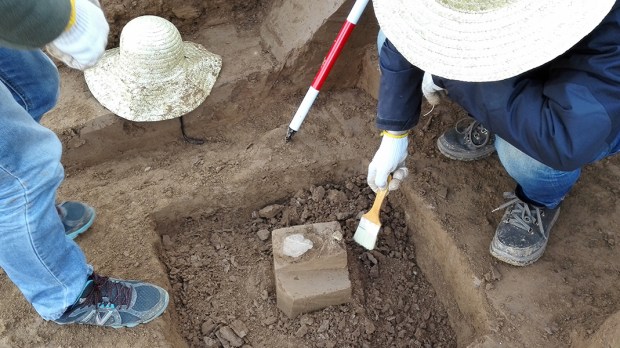Lenten Campaign 2025
This content is free of charge, as are all our articles.
Support us with a donation that is tax-deductible and enable us to continue to reach millions of readers.
The discovery in western China of what appear to be ancient stone tools suggests to scientists that mankind’s distant ancestors—hominins—may have migrated out of Africa much earlier than previously thought.
The tools—basically chipped rocks estimated to be 2.1 million years old—were made by ancient ancestors of humans who may have been small bipedal apes, with brains about the size of a chimpanzee’s.
Hominins dating back 6 million years have been discovered in Africa.
It has been thought that the first to expand out of Africa were Homo erectus. These have been discovered across Asia, beginning in 1891 in Indonesia. Some specimens are 1.6 million years old.
But older hominin bones were discovered in other parts of Asia, such as in Dmanisi, Georgia, where scientists uncovered some fossils as old as 1.75 million years. Short, with tiny brains, these were probably not homo erectus. Some stone tools found in Dmanisi appeared to be 1.82 million years old.
In 2001, Zhaoyu Zhu, a geologist at the Chinese Academy of Sciences in Guangzhou, China, reexamined a skull that had been found in 1964 in western China, in a place called Lantian. It was thought to be 1.15 million years old. Zhu and his colleagues also found what appeared to be ancient stone tools embedded 200 feet deep in the side of a gully.
Now, 17 years later, the team has announced its findings.
Why did it take so long? For one thing, they had to dig through 17 geologic layers of the gully to make sure the tools were made by hominins. Doing so, they found over a hundred stone tools.
“We wanted to make it watertight and bombproof,” said Robin Dennell, a paleoanthropologist at the University of Exeter who joined Zhu’s team in 2010.
They could also determine the age of the tools by where they were found in relationship to the Earth’s changing magnetic field. As the New York Times explained:
From time to time, Earth’s magnetic field flips, turning north to south. Magnetic minerals in the soil and ocean are pushed into alignment with the field; when they are trapped in rocks, they still point in the telltale direction. Geophysicists have precisely determined the timing of these magnetic flips, which have taken place at the same time all around the world. It’s a useful way to date the material found in layers of rock. The layers in the gully formed over many hundreds of thousands of years. And the oldest tools were neatly sandwiched between rocks that formed between two flips of the magnetic field: one 2.14 million years ago, and a second about 1.85 million years ago. Dr. Dennell and his colleagues estimate that the tools are close to the far end of that window: 2.12 million years old. That would make these tools the oldest evidence of hominins ever found outside Africa. And that makes it unlikely that the first hominins to expand out of Africa were Homo erectus. Instead, Dr. Dennell speculated, a much earlier branch of the human tree ventured forth.

